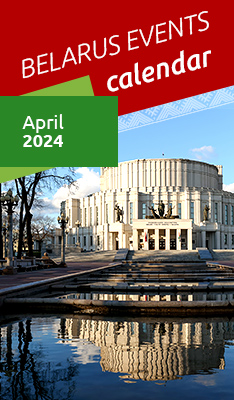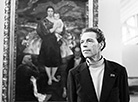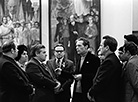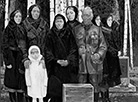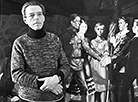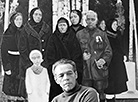BELARUS’ HERITAGE: People’s Artist Mikhail Savitsky
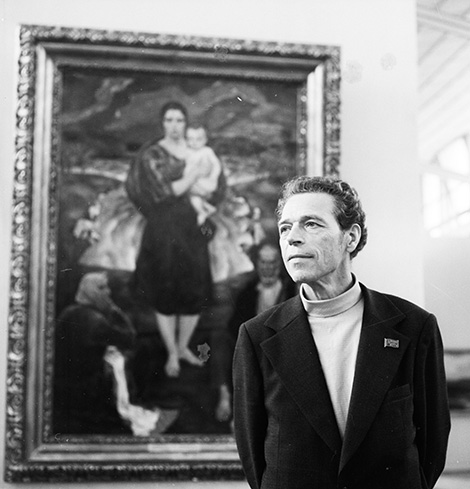
In 2017 Belarus marks the 95th anniversary since the birth of Mikhail Savitsky, the Hero of Belarus, people’s artist, academician, educator, winner of many prestigious awards, the first holder of the Order of Francysk Skaryna.
The remarkably talented artist and truly unique man, Mikhail Savitsky has entered the history of the 20th century world art as the author of astonishing cycles of paintings: Partisan Belarus, Figures on the Heart, The Black Story, Commandments of bliss, The 20th century, and a number of landmark paintings – Partisans, Requiem and Partisan Madonna...
The life and art of Mikhail Savitsky were influenced greatly by the main tragedy of the Belarusian people in the 20th century. Being a 20-year-old boy, the future artist joined the Red Army and went to the front where he experienced all the horrors of the Great Patriotic War and was a prisoner of the Nazi death camps in Dusseldorf, Buchenwald, and Dachau. In April 1945 he spent 17 agonizing days in the typhus barrack after he was arrested for the organization of the attempted escape of prisoners. He survived by miracle.
After the war Mikhail Savitsky, a native of the village Zvenyachi near Vitebsk, the city which is associated with the legendary artists Marc Chagall and Kazimir Malevich, devoted himself to art. In 1951 he graduated from the Minsk Art School and entered the Surikov Art Institute in Moscow the same year. After returning to his homeland in 1980, he became the head of the creative fine arts workshop of the USSR Academy of Arts in Minsk.
Mikhail Savitsky gained fame at the age of 40 after he made the painting “Partisans” (1963) that presented a new personal and honest vision of war in Belarusian art. In the 1960s the tragedy of war came to the fore in his art and Mikhail Savitsky was recognized as a new name in art, as a unique artist with his own vision and style.
One of the most eminent works of this period was Partisan Madonna (1967) inspired by Raphael’s Sistine Madonna. It was dedicated to the motherhood as an eternal symbol of life. In the focus the Belarusian artist had the people who survived the Nazi occupation - women with children, half-dead elderly people and wounded soldiers.
The war theme was continued in the famous cycle of 16 paintings Figures on the Heart (1974 – 1980) about the horrors of the Nazi death camps and in other works such as Vitebsk Gate (1967), Field (1974), Crying for the dead heroes (1974) and the triptych Aggression (1984). In 1972 the artist created an expressive tempera painting for the Great Patriotic War Museum in Minsk.
Few years later, the artist turned to another tragedy of the 20th century – the Chernobyl disaster. A series of paintings Black Story (1987-1992) was awarded the gold medal of the Academy of Arts of the BSSR. To mark the 20th anniversary of the Chernobyl accident, Belarus’ National Art Museum arranged the expo of his paintings: Requiem, the Chernobyl Madonna, Evacuation, The Abandoned, the Cross of Hope, The Fate, One with Vision and the Allegory of Chernobyl.


